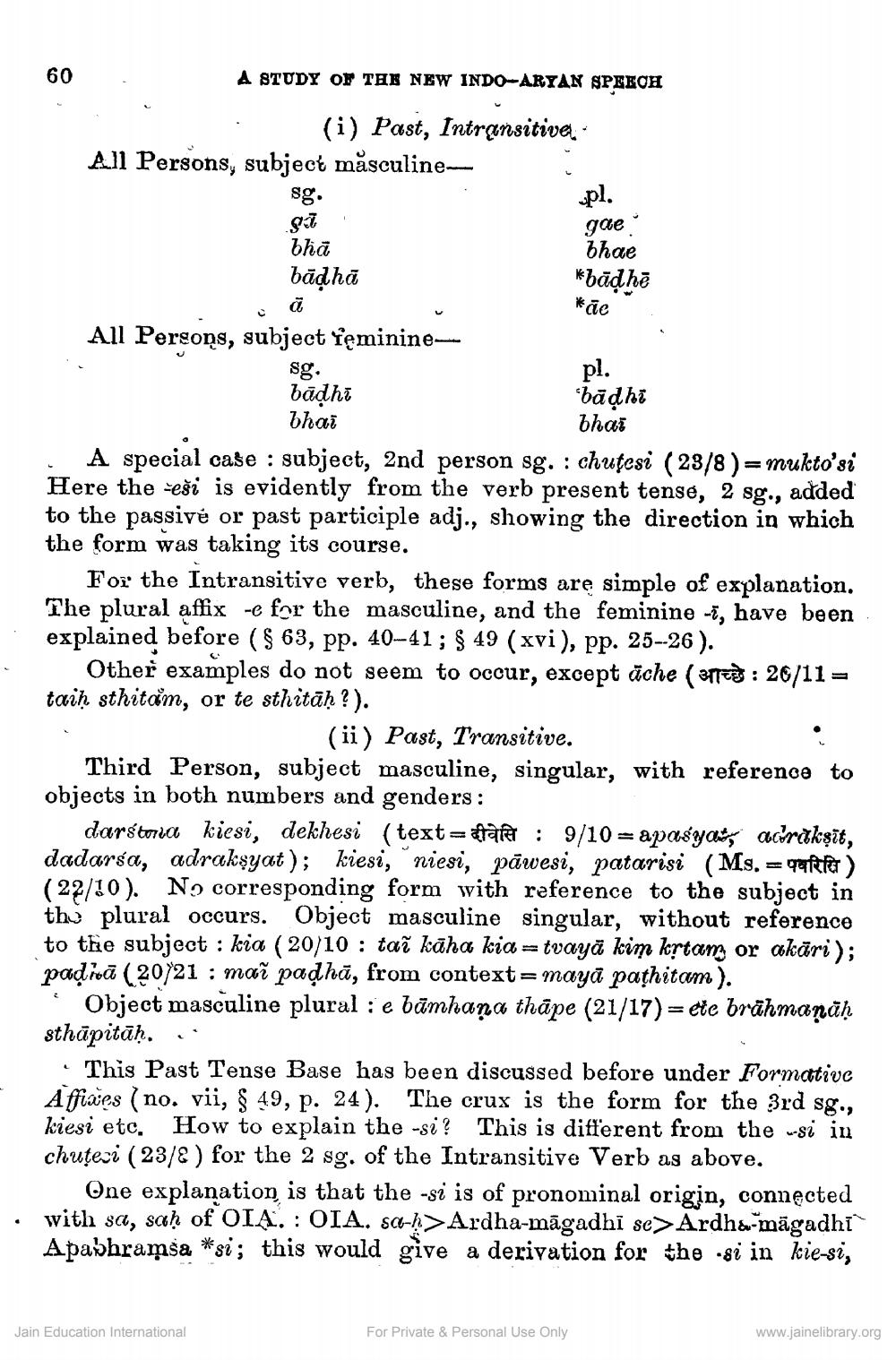________________
60
A STUDY OF THE NEW INDO-ARYAN SPEECH
(i) Past, Intransitive, All Persons, subject màsculinesg.
gae bhā
bhae bādhā
*būdhë
pl.
gai
Pl.
All Pergong, subject reminine
sg. bāļhi
bādhi bhai
bhai A special case : subject, 2nd person sg. : chutesi (23/8)= mukto'si Here the seši is evidently from the verb present tense, 2 sg., added to the passive or past participle adj., showing the direction in which the form was taking its course.
For the Intransitive verb, these forms are simple of explanation. The plural affix -e for the masculine, and the feminine -7, have been explained before ( $ 63, pp. 40-41; § 49 (xvi), pp. 25-26).
Other examples do not seem to occur, except äche (37) : 26/11 – taiḥ sthitam, or te sthitāḥ?).
(ii) Past, Transitive. Third Person, subject masculine, singular, with reference to objects in both numbers and genders:
darstora kiesi, dekhesi (text=fare : 9/10 = apasyau, acirakşīt, dadarsa, adrakşyat); kiesi, niesi, pāwesi, patarisi (Ms. = qarta) (27/10). No corresponding form with reference to the subject in the plural occurs. Object masculine singular, without reference to the subject : kia (20/10 : tał kāha kia= tvayā kim krtamor akāri); padroa (20/21 : mał padhā, from context = mayā pathitam).
Object masculine plural : e bāmhana thāpe (21/17) = ete brāhmanāḥ sthāpitāḥ..
This Past Tense Base has been discussed before under Formative Affiães (no. vii, $ 49, p. 24). The crux is the form for the 3rd sg., kiesi etc. How to explain the -si? This is different from the -si in chuteži (23/8 ) for the 2 sg. of the Intransitive Verb as above.
One explanation is that the -si is of pronominal origin, connected · with sa, saḥ of OIA. : OIA. SC-}>Ardha-māgadhi se>Ardha-māgadhi
Apabhramsa *si; this would give a derivation for the -si in kie-si,
Jain Education International
For Private & Personal Use Only
www.jainelibrary.org




